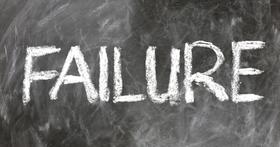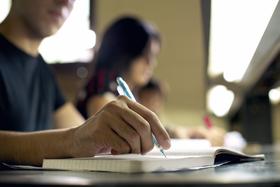Top Rankings
Bird Island-Olivia-Lake Lillian School District ranks among the top 20% of public school district in Minnesota for:
Category
Attribute
Student Attention
Lowest student-teacher ratio (Top 1%)
For the 2025-26 school year, there are 2 public high schools serving 219 students in Bird Island-Olivia-Lake Lillian School District. This district's average high testing ranking is 6/10, which is in the top 50% of public high schools in Minnesota.
Public High Schools in Bird Island-Olivia-Lake Lillian School District have an average math proficiency score of 25% (versus the Minnesota public high school average of 36%), and reading proficiency score of 64% (versus the 51% statewide average).
Public High School in Bird Island-Olivia-Lake Lillian School District have a Graduation Rate of 90%, which is more than the Minnesota average of 83%.
The school with highest graduation rate is Bold Senior High School, with ≥90% graduation rate. Read more about public school graduation rate statistics in Minnesota or national school graduation rate statistics.
Minority enrollment is 15% of the student body (majority Hispanic), which is less than the Minnesota public high school average of 37% (majority Hispanic and Black).
Overview
This School District
This State (MN)
# Schools
4 Schools
1,171 Schools
# Students
619 Students
309,919 Students
# Teachers
45 Teachers
18,769 Teachers
Student-Teacher Ratio
10:1
10:1
Student By Grade
District Rank
Bird Island-Olivia-Lake Lillian School District, which is ranked within the top 50% of all 520 school districts in Minnesota (based off of combined math and reading proficiency testing data) for the 2022-2023 school year.
The school district's graduation rate of 90% has stayed relatively flat over five school years.
Overall District Rank
#208 out of 525 school districts
(Top 50%)
(Top 50%)
Math Test Scores (% Proficient)
43%
46%
Reading/Language Arts Test Scores (% Proficient)
50%
51%
Science Test Scores (% Proficient)
35%
41%
Graduation Rate
(21-22)≥90%
84%
Students by Ethnicity:
Diversity Score
0.29
0.57
% American Indian
n/a
2%
% Asian
n/a
7%
% Hispanic
16%
11%
% Black
n/a
11%
% White
83%
63%
% Hawaiian
n/a
n/a
% Two or more races
1%
6%
All Ethnic Groups
District Revenue and Spending
The revenue/student of $15,800 in this school district is less than the state median of $17,860. The school district revenue/student has stayed relatively flat over four school years.
The school district's spending/student of $14,330 is less than the state median of $18,585. The school district spending/student has stayed relatively flat over four school years.
Total Revenue
$10 MM
$15,547 MM
Spending
$9 MM
$16,179 MM
Revenue / Student
$15,800
$17,860
Spending / Student
$14,330
$18,585
Best Bird Island-Olivia-Lake Lillian School District Public High Schools (2025-26)
School
(Math and Reading Proficiency)
(Math and Reading Proficiency)
Location
Quick Facts
Rank: #11.
Bold Senior High School
(Math: 20-29% | Reading: 60-69%)
Rank:
Rank:
6/
Top 50%10
701 S 9th St
Olivia, MN 56277
(320) 523-1031
Olivia, MN 56277
(320) 523-1031
Gr: 9-12 | 219 students Student-teacher ratio: 10:1 Minority enrollment: 15%
Rank: #22.
Bold Alp
Alternative School
(Math: <50% | Reading: <50% )
Rank:
Rank:
4/
Bottom 50%10
701 S 9th St
Olivia, MN 56277
(320) 523-1031
Olivia, MN 56277
(320) 523-1031
Gr: 7-12
Recent Articles

Charter Schools vs Public Schools 2025: Key Differences & Trends
Explore updated 2025 insights comparing charter schools vs public schools, enrollment, academic outcomes, funding, and real-world examples for families and educators.

Are Public Schools Ready for the 21st Century? 2025 Update
Explore 2025 insights on whether public schools are ready for the 21st century, covering performance, technology, equity, funding, and future-ready learning.

Public School Open House & Enrollment Season Guide
A parent-focused guide to the public school open house and enrollment season, with expert questions, timelines, and decision tips.





